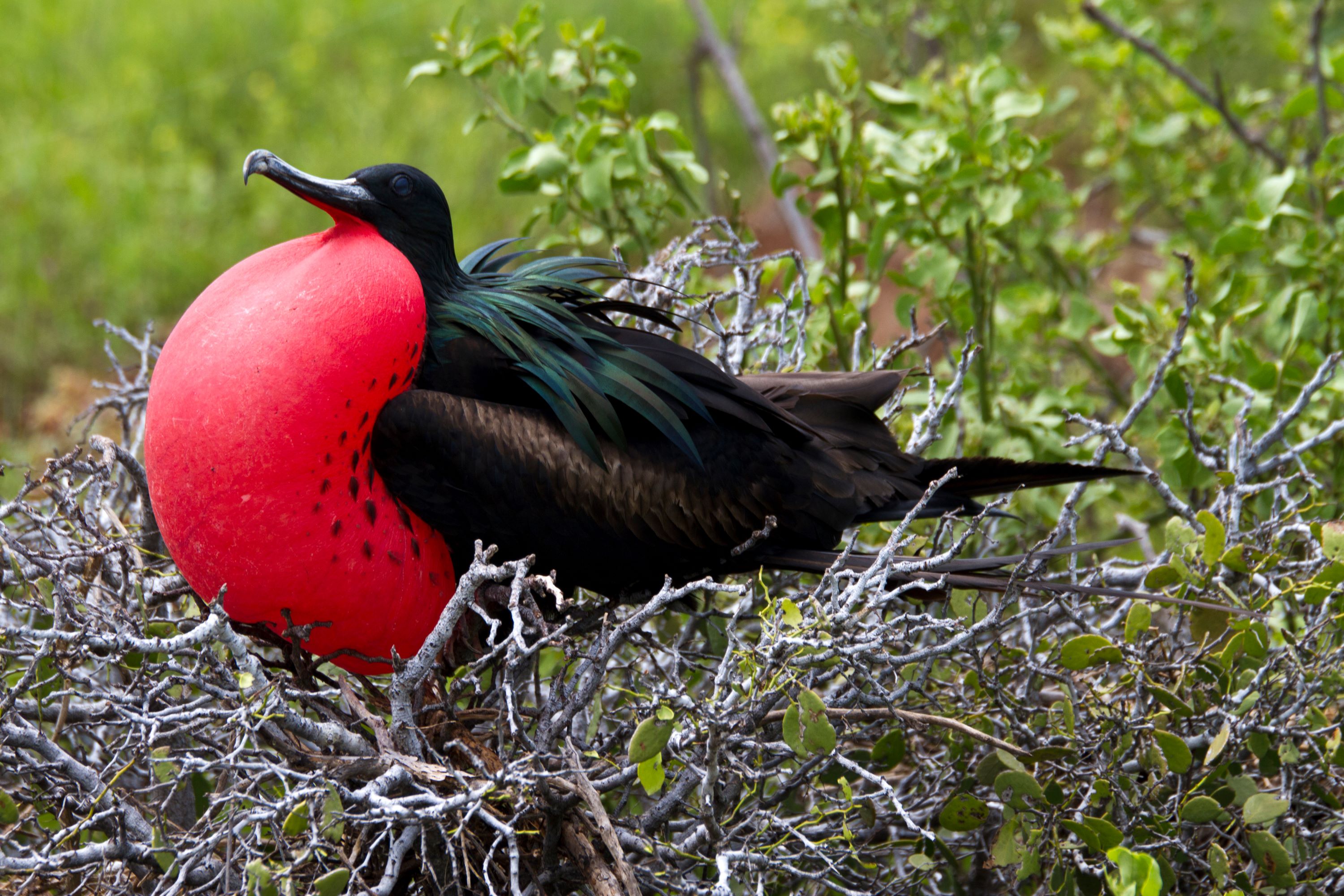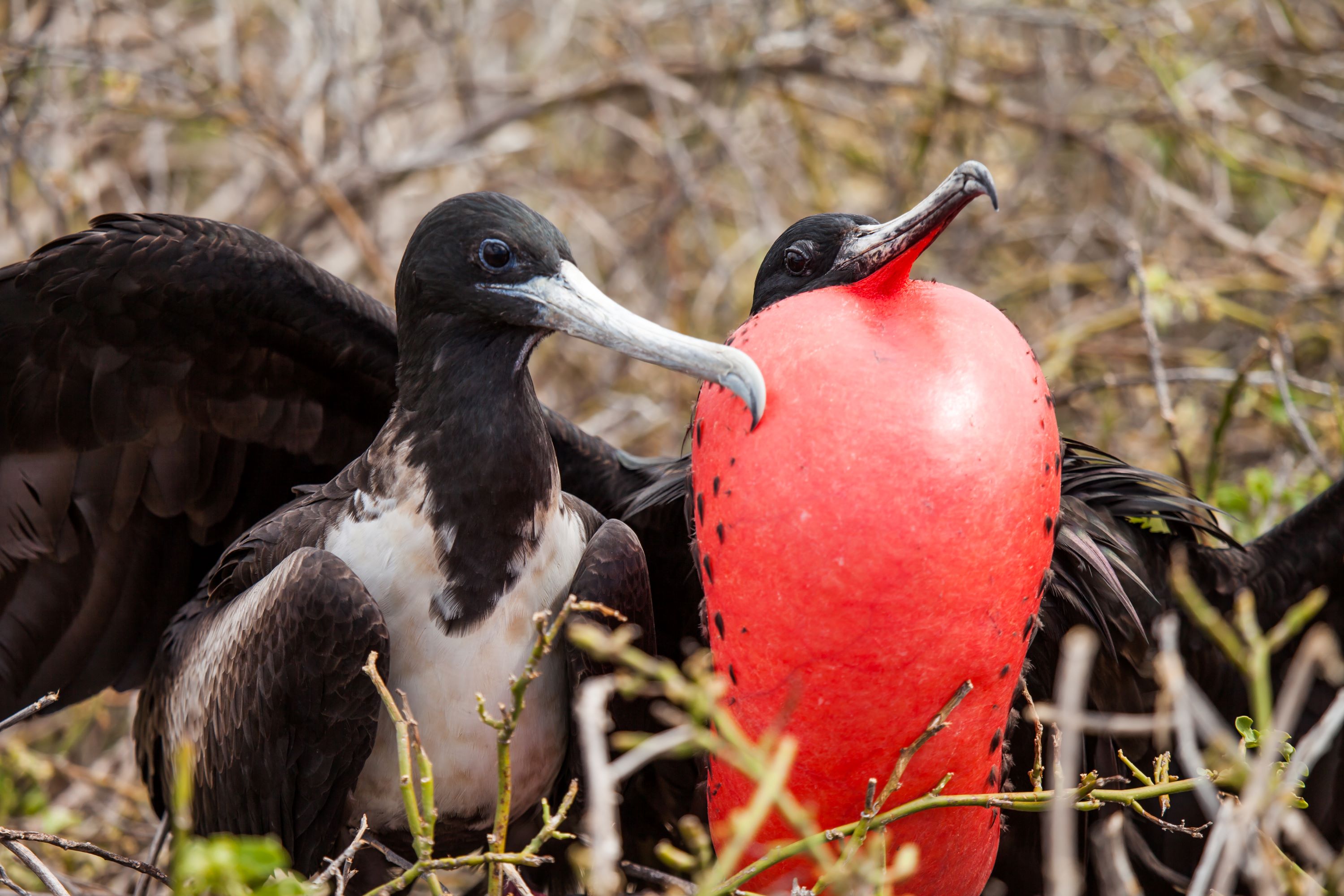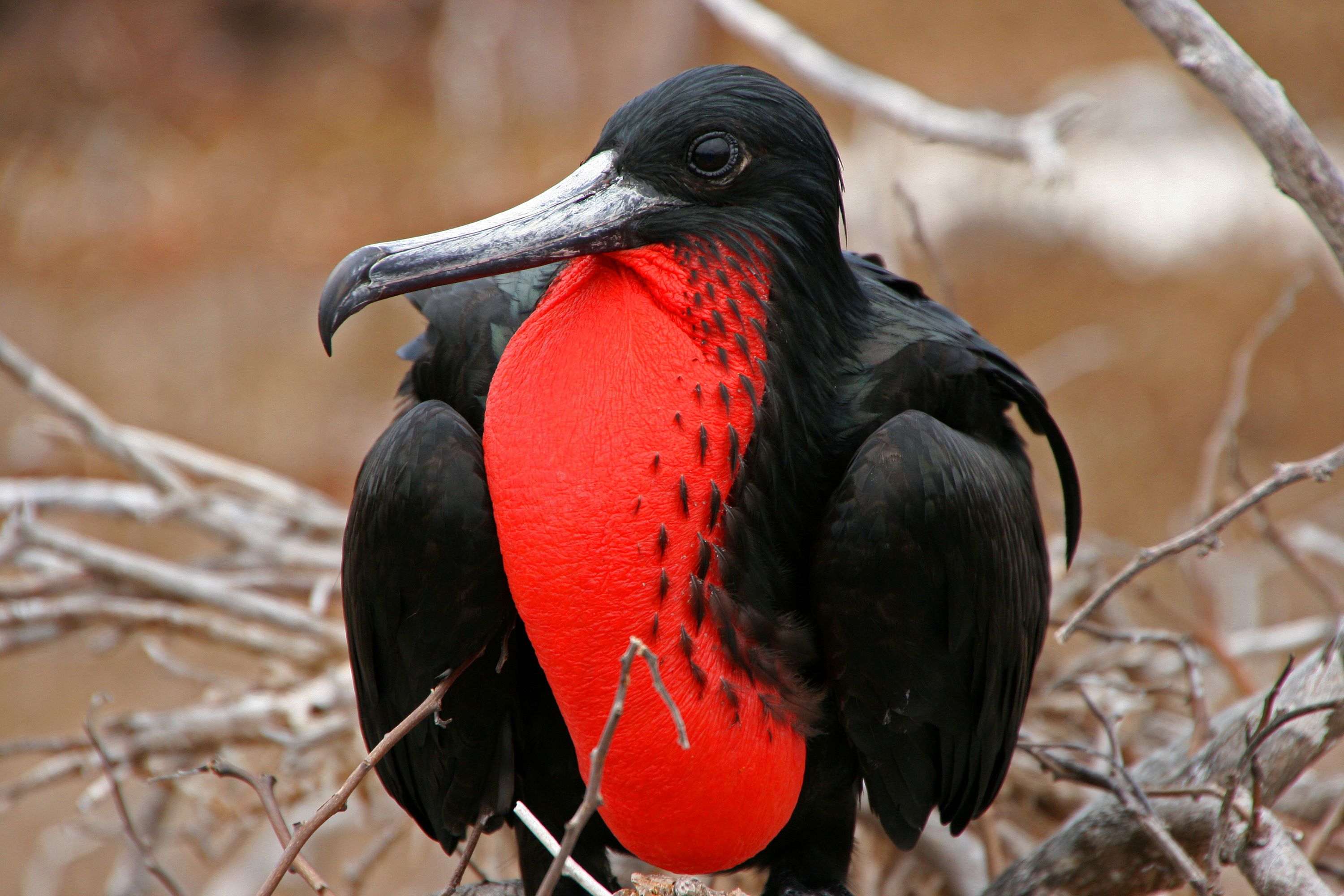
Genus Fregata: The Enigmatic Frigatebirds of the Skies
Introduction to the Genus Fregata
The Genus Fregata, encompassing the fascinating family of frigatebirds, represents some of the most distinctive and intriguing seabirds in the avian world. These birds are renowned for their extraordinary aerial abilities, distinctive physical characteristics, and unique reproductive behaviors. Found primarily in tropical and subtropical regions, the frigatebirds of the Genus Fregata are a symbol of the freedom and mystery of the open seas.
Physical Characteristics
Frigatebirds are large seabirds with long, slender wings and deeply forked tails. One of their most notable features is the males' gular sac, a brightly colored throat pouch used in courtship displays. These birds exhibit sexual dimorphism, with males generally being smaller than females and more vividly colored during the breeding season. Their plumage is predominantly black, with females and juveniles displaying white markings.
Adaptations for Flight
Frigatebirds have the largest wing area to body weight ratio of any bird, enabling them to soar effortlessly for long periods. This adaptation is crucial for their survival, as their low body fat and lack of waterproofing in their feathers make it challenging for them to rest on the water's surface. They are known for their incredible agility in the air, capable of performing acrobatic maneuvers while chasing prey or interacting with other birds.

Habitat and Distribution
Members of the Genus Fregata are typically found over tropical and subtropical oceans around the world. They prefer warmer climates and are commonly seen around islands and coastal regions. While they spend most of their lives at sea, they come to land to breed and nest.
Diet and Unique Feeding Behavior
Frigatebirds primarily feed on fish and squid, which they often capture by snatching from the ocean's surface. They are also known for their kleptoparasitic behavior, chasing other seabirds to force them to regurgitate or drop their catch, which the frigatebirds then retrieve in mid-air. This opportunistic feeding strategy underscores their adaptability and survival skills.
Breeding and Courtship Displays
The courtship rituals of frigatebirds are among the most dramatic in the bird kingdom. Males inflate their red gular sacs and perform various displays, including wing flapping and vocalizations, to attract females. These displays take place in large colonies, where several males compete for the attention of passing females.

Nesting and Incubation
Frigatebirds nest in colonies, often on remote islands. They build nests out of sticks and twigs in low-lying bushes or trees. Both parents share the responsibility of incubating the single egg laid per breeding season, which can last around 50-60 days.
Chick Rearing and Parental Care
The parental care exhibited by frigatebirds is extensive, with chicks being dependent on their parents for up to two years – one of the longest dependency periods among birds. Chicks are fed by regurgitation and require constant care and protection during their development.
Conservation Status and Threats
The conservation status of frigatebirds varies among species within the Genus Fregata. While some species are not currently considered endangered, they all face threats from habitat loss, climate change, and human disturbances. Conservation efforts are focused on protecting breeding grounds and mitigating environmental threats.
Frigatebirds in Culture and Mythology
Frigatebirds have captivated human imagination for centuries, often featuring in the folklore and mythology of coastal and island cultures. Their soaring flight and piratical feeding habits have made them symbols of freedom and tenacity.
Conclusion: The Majestic Genus Fregata
In conclusion, the frigatebirds of the Genus Fregata are truly remarkable, showcasing a unique blend of aerial prowess, intriguing reproductive behaviors, and adaptability. Their presence in the world’s tropical and subtropical regions highlights the diversity and beauty of marine avian life. Though sightings are rare in inland areas like Utah, the occasional appearance of a frigatebird offers a rare and fascinating glimpse into the lives of these magnificent seabirds, underscoring the interconnectedness of global ecosystems and the wonder of avian migration.
Species in the Genus Sula:
- Ascension Frigatebird
- Christmas Frigatebird
- Great Frigatebird
- Lesser Frigatebird
- Magnificent Frigatebird